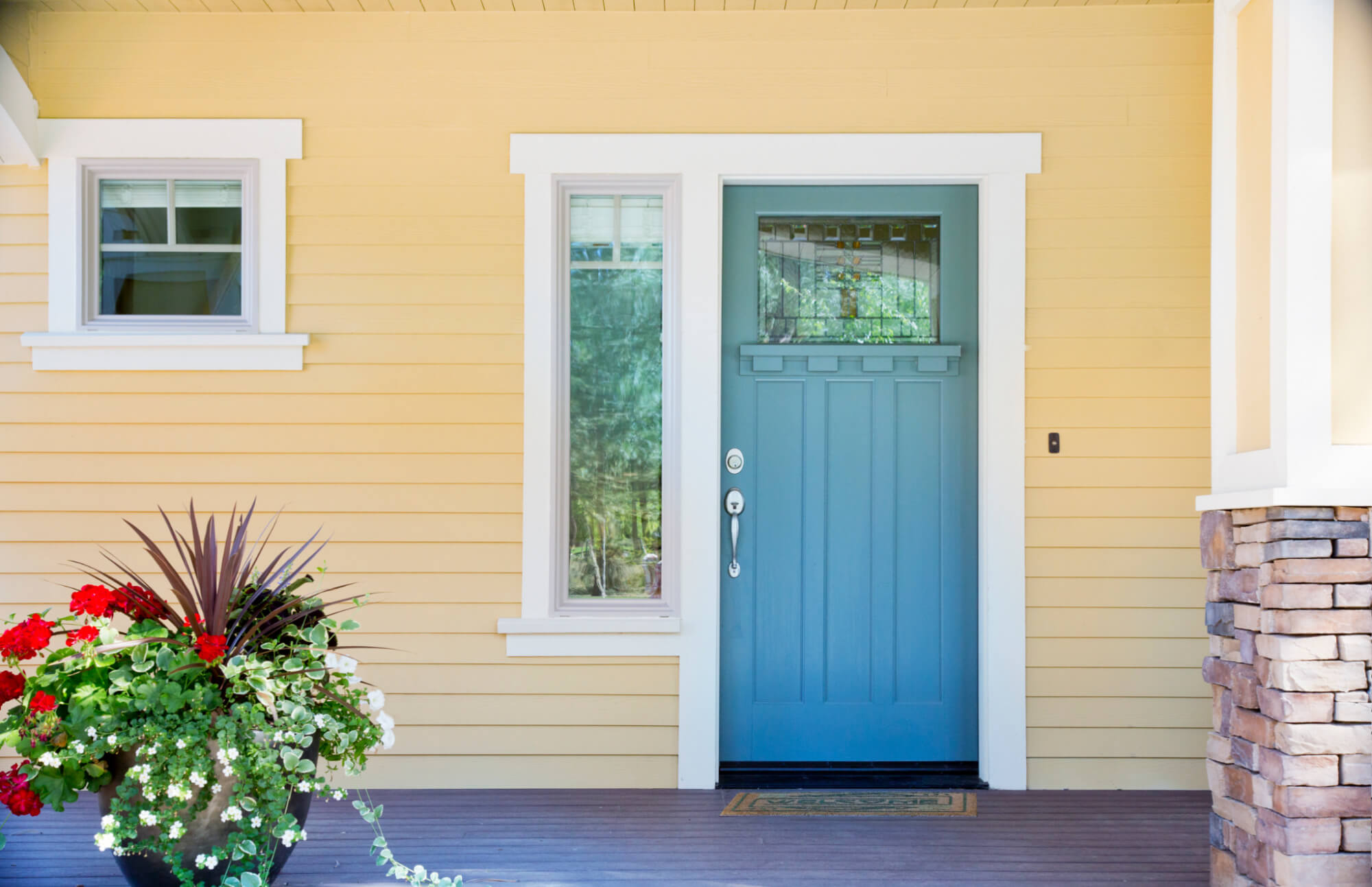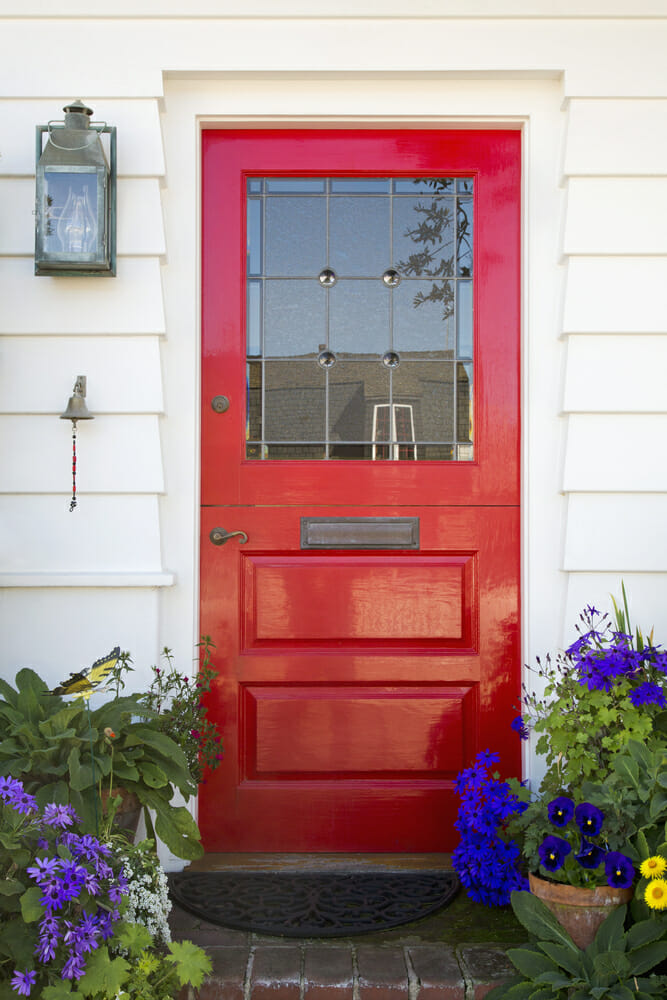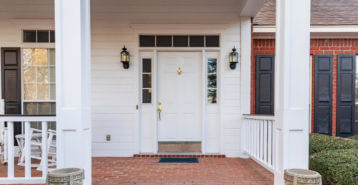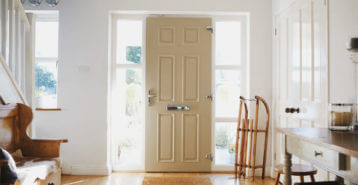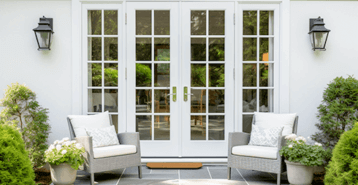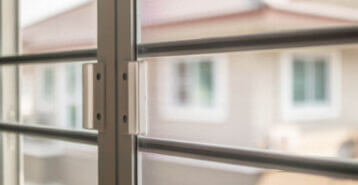When it comes time for a door replacement at home, you might be unsure about how to get started. For instance, what type of door do you need, and do you need to hire a professional to get the job done? Homeowners who are looking to complete a door replacement project, whether for their home’s exterior or interior doors, will choose between two main types of doors – slab doors or pre-hung doors.
Installing new slab doors in your home is a simple and affordable way to add value, boost curb appeal, and provide family members with more privacy. Modernize is here to help you understand slab doors, when to install a slab door instead of a pre-hung door, and how to get started with planning and hiring a contractor.
What is a Slab Door?
When you need to replace a door at home, one of the first steps is understanding the difference between slab doors and pre-hung doors.
A slab door is a stripped-down door that does not include a frame, hinges, or other hardware, though is typically pre-cut for doorknob. This is why they call it a “slab” door — it is essentially just a slab of material that is cut to fit an entryway, then attached to the door frame and hinges during installation. With that being said, installation requires an existing door frame, unlike a pre-hung door which does include a built-in frame and hinges.
Slab door designs vary widely, from generic paneled doors and raw designs to exquisite vintage doors made from old barns or buildings. Their functionality includes swing doors, slab barn doors that hang from a track, slab French doors, and sliding closet doors or patio doors.
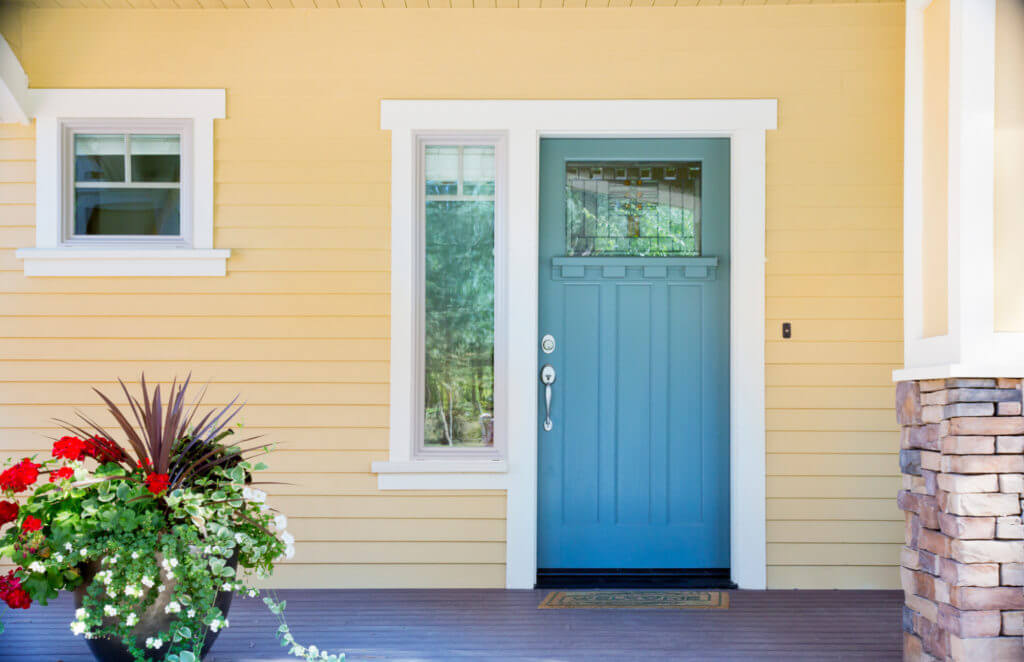
How to install a slab door
Slab doors can be installed as a DIY project for homeowners who are handy and understand the basics of door installations. Slab door installations require homeowners to:
1. Paint and finish door, if wood material
2. Measure, cut, and score mortises (if the frame is new, you’ll have to repeat these steps for the frame)
3. Secure hinges to door
4. Insert door pins
5. Install handle and lock hardware
If you are installing a slab barn door that slides instead of swings, you will skip the hinges installation. Instead, install a track-and-runner system above the door frame. Note that this could require additional work to ensure the door frame is able to support a slab barn door.
Pre-hung vs. Slab doors
As mentioned, there are two basic types of doors you will consider when planning a door replacement – slab and pre-hung doors. Each type of door is ideal in different circumstances. Take a look at the key differences between slab and pre-hung doors:
| Pre-Hung Door Features | Slab Door Features |
| Frame, hinges, hardware included | Frame, hinges, hardware not included |
| Pre-cut door knob hole | Door knob requires cutting |
| Weather-resistant | Requires weather sealing |
| Wood doors are already finished | Wood needs to be sanded, painted, or stained |
| Can be difficult to position during install | Easier to hold and install |
| Heavy | Easier to transport, more sturdy |
| Pricier | Less expensive, but requires additional materials |
| Preferred for a new home or room, or if dealing with damaged door frame/area | Preferred when replacing existing door with no frame damage |
Where are Slab Doors Typically Used?
Interior Doorways
Slab doors are ideal for interior doorways as they typically do not require weather-proofing, which, unlike pre-hung doors, does not come installed from the factory.
Thanks to their simplicity, slab doors can also be installed to slide, rather than swing open. For certain projects—such as closets, pantries, bathroom entryways, or barn-style doors—a slab door will be your best solution.
Existing door frames
Slab doors are also frequently used in renovation projects in areas where door frames already exist. Swapping a new slab door for an existing one is a simple way to add appeal and value to a home. Additionally, an existing frame gives you the option to install a vintage or custom door. However, keep in mind that this can increase the difficulty and cost of the door replacement project.
Pros and Cons of Slab Doors
Pros |
Cons |
| Low cost
Since slab doors do not include a frame or hardware, they are a low-cost option compared to pre-hung doors. |
Carpentry work required
Slab doors require mortises be cut and hinges installed. This requires precise measurements, carpentry tools, and some practice to get your door ready to hang. |
| Customization
Slab doors allow creativity and design to shine since they come in a variety of materials and are painted after purchase. Vintage and antique doors are rarely available pre-hung a frame, meaning a slab door is likely the only option for this design aesthetic. |
Requires door frame or track
If you’re simply replacing one door with another, then this might not be an issue, for homeowners who need new door frames or wish to install a sliding slab door, some additional maintenance work will be required. |
| Light, easy to move
Compared to their pre-hung counterparts, slab doors are much simpler to move thanks to their low weight and exclusion of a bulky frame. This means they can be more easily installed with one person. |
Hidden costs
A slab door is typically more affordable than a pre-hung option, but they require several additional purchases, including paint, primer, hinges, and lock and door knob hardware. This can cause the cost of a slab door installation to run up quickly. |
Types and Materials
- Types: Slab doors can come in a variety of shapes, sizes, and styles—from traditional two-, five-, or six-panel slabs, to slab French doors.
- Materials: Wood is the most common material used for slab doors, but it’s certainly not the only option. Slab doors can also be made from a variety of materials including fiberglass, steel, or composite materials. They also come in solid or hollow options. Whole hollow slab doors are oftentimes more affordable than solid ones, they are especially susceptible to damage and have a shorter life expectancy.
Standard Slab Door Sizes
When preparing for your door renovation project, you’ll want to know what size slab door you’ll need. Whether pre-hung or slab, doors can come in a variety of pre-made sizes. Here’s a quick look at some common door sizes:
| Type | Standard Height | Standard Width | Standard Thickness | Other Common Sizes |
| Interior | 80” | 36” | 1 ⅜” or 1 ¾” | Width can also be: 24”, 28”, 30”, 32”, 36” |
| Exterior | 80” | 36” | 1 ¾” | 60”H x 96”W, 72”H x 96”W, 96”H x 96”W |
While these are the standard sizes for interior and exterior doors, homeowners can have custom doors made to fit nearly any need or purpose. Keep in mind that ADA requirements call for doors to be at least 36” in width to allow for proper accessibility when using a wheelchair or walker.
The best practice to ensure you purchase the correct size door is:
- Measure horizontally across the top, middle, and bottom. Record the smallest measurement as the door width.
- Then, measure vertically on the left side, center, and right side. Record the smallest measurement as the door height.
- Lastly, measure the location of all three hinges by measuring down from the top of the door to the top of each hinge. You will also want to record the width and height of each hinge.
Slab Door Costs
The cost of a pre-hung door ranges between $50–$400. In addition to the door, you will also need to purchase hardware which can range from $20–$200, and paint which can be $20–$100.
Unless you are installing the slab door yourself, you will need to hire a professional. Labor costs average between $150–$500, depending on prices in your area.
All in all, depending on your location and selected materials, a slab door replacement can cost as little as a few hundred dollars. However, it can quickly increase in cost if more extravagant options are selected or you live in an area with higher-than-average labor costs.
Finding a Door Installer
Once you understand your needs, have a budget in mind, and feel ready to start your door replacement project, your next step is to explore door installers in your area. Chances are, you will have many different contractors to choose from, so knowing how to narrow down your options will be very helpful.
The pros at Modernize are here to help you connect with reliable, local door installers. This way, you can be confident that you’re finding trustworthy, high-quality contractors who you can establish a strong working relationship with, and who you can trust to install the perfect slab doors for your home.
Compare top-rated doors pros in your area.
Read real homeowner reviews, explore qualifications, and view promotions. Modernize makes it easy to browse professionals and find one that will be perfect for your project.
